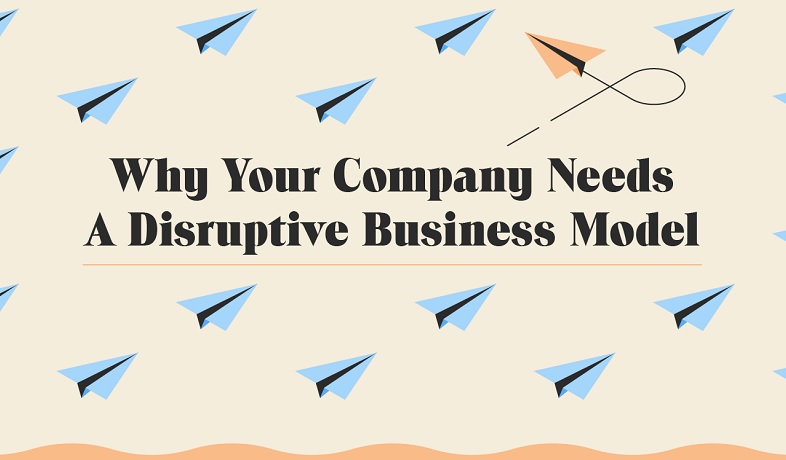To disrupt, or not disrupt. Many executive leaders are experiencing increased competition in their industries because rivals are reshapi...
To disrupt, or not disrupt.
Many executive leaders are experiencing increased competition in their industries because rivals are reshaping their traditional business models. This behavior is referred to as disruption.
The current environment requires business to constantly be changing. Therefore, disruptive business models are being developed by startups and existing businesses. Disruptive business models strategically seek to improve the way a current industry operates. These models often incorporate innovative components in their business plan.

Although both startups and established businesses seek to create disruptive business models, startups often succeed in disruptive innovation. It boils down to reputation and risk. Many new companies are flexible to test new waters without risking large customer bases. Established companies are exposed to a larger public eye which can lead to the demise of the company. Take, for example, Blockbuster.
Fundera notes how Netflix spent years in a trial and error period before they received immense attention. As many know, Blockbuster was a traditional retail video renting business. Netflix identified consumer problems with this business model and created a more applauded service. Some features that lead to the success of Netflix were personal viewing suggestions, no late fees, and mail-delivery.
Avoid being ran out of business by competitors and follow these steps to remain disruptive and competitive: embrace change, expand your customer base, value new perspectives and listen to your customer. These steps and more are outlined in disruptive business model Infographic posted below.
Welcome Change
Welcoming change involves staying open-minded to new alternatives. This applies to products, services and business models. As new technologies emerge and trends change it’s crucial to stay adaptable.
Expand Your Customer Base
Expanding your customer base implies widening your products and services to new markets. This can involve creating an alteration to a product that appeals to a niche group or identifying a market who currently doesn’t benefit from your service.
Value New Perspectives
Value new perspectives speaks to receiving feedback from an external party. Sometimes a workplace that has little to no new hires can be blind to new trends. This can lead to a loss of customers and profit. Ask a trusted individual outside your company for feedback.
Listen To Your Customer
Listening to your customer aims to continuously understand consumer demands. Mobile has altered the way companies communicate with consumers. Social media, search engines and apps are a few channels to listen to consumers beyond feedback forms. Take feedback seriously and take action.
Whether you’re a new or existing company, flexibility is key to staying competitive in your industry. Disrupt the now and create the new.
Many executive leaders are experiencing increased competition in their industries because rivals are reshaping their traditional business models. This behavior is referred to as disruption.
The current environment requires business to constantly be changing. Therefore, disruptive business models are being developed by startups and existing businesses. Disruptive business models strategically seek to improve the way a current industry operates. These models often incorporate innovative components in their business plan.

Although both startups and established businesses seek to create disruptive business models, startups often succeed in disruptive innovation. It boils down to reputation and risk. Many new companies are flexible to test new waters without risking large customer bases. Established companies are exposed to a larger public eye which can lead to the demise of the company. Take, for example, Blockbuster.
Fundera notes how Netflix spent years in a trial and error period before they received immense attention. As many know, Blockbuster was a traditional retail video renting business. Netflix identified consumer problems with this business model and created a more applauded service. Some features that lead to the success of Netflix were personal viewing suggestions, no late fees, and mail-delivery.
Avoid being ran out of business by competitors and follow these steps to remain disruptive and competitive: embrace change, expand your customer base, value new perspectives and listen to your customer. These steps and more are outlined in disruptive business model Infographic posted below.
Welcome Change
Welcoming change involves staying open-minded to new alternatives. This applies to products, services and business models. As new technologies emerge and trends change it’s crucial to stay adaptable.
Expand Your Customer Base
Expanding your customer base implies widening your products and services to new markets. This can involve creating an alteration to a product that appeals to a niche group or identifying a market who currently doesn’t benefit from your service.
Value New Perspectives
Value new perspectives speaks to receiving feedback from an external party. Sometimes a workplace that has little to no new hires can be blind to new trends. This can lead to a loss of customers and profit. Ask a trusted individual outside your company for feedback.
Listen To Your Customer
Listening to your customer aims to continuously understand consumer demands. Mobile has altered the way companies communicate with consumers. Social media, search engines and apps are a few channels to listen to consumers beyond feedback forms. Take feedback seriously and take action.
Whether you’re a new or existing company, flexibility is key to staying competitive in your industry. Disrupt the now and create the new.
![Disruptive Innovation How To Stay Competitive In Any Industry [Infographic]](https://i.imgur.com/42RkTpN.png)







COMMENTS